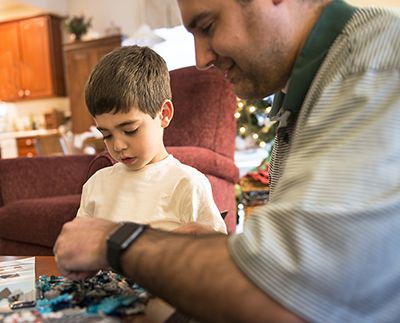Water quality: Some assembly required
Author
Published
12/12/2016
 Some assembly required. Those three words strike fear in the hearts of parents as Christmas approaches. The visions dancing in our heads aren’t of sugarplums, but rather of toy parts scattered across the living room floor. It’s always tempting to open the box of your child’s new toy, set the instructions aside and start putting it together, attaching Part A to Part B and inserting into slot M, and so forth. After all, who can resist when your kid wants to play with that toy right NOW instead of waiting a couple of days when we get home from Grandma and Grandpa’s house. More often than not, I’ve found that hasty approach leads to a critical failure at some point, forcing me to start the assembly process over – this time with instructions (and a frustrated and impatient child) directly in front of me.
Some assembly required. Those three words strike fear in the hearts of parents as Christmas approaches. The visions dancing in our heads aren’t of sugarplums, but rather of toy parts scattered across the living room floor. It’s always tempting to open the box of your child’s new toy, set the instructions aside and start putting it together, attaching Part A to Part B and inserting into slot M, and so forth. After all, who can resist when your kid wants to play with that toy right NOW instead of waiting a couple of days when we get home from Grandma and Grandpa’s house. More often than not, I’ve found that hasty approach leads to a critical failure at some point, forcing me to start the assembly process over – this time with instructions (and a frustrated and impatient child) directly in front of me.
It reminds me a little of Iowa’s water quality challenges. There are some who want immediate results in the form of regulations that don’t consider the differences affecting farms in different landscapes. It would be a little like attaching the wheels to little Johnny’s new bike with a hammer because you didn’t have a wrench handy. Farmers are using various tools to do their part in improving water quality – planting record acres of cover crops, installing bioreactors and planting saturated buffers. But not every tool will work on every farm.
With their 2016 crops in the bin, farmers and crop advisors are taking time this winter to learn more about which tools are appropriate for their farms – reading the instruction book, if you will. The most popular session at one of the Midwest’s largest agriculture conferences this winter wasn’t on how to improve yields, capture higher prices or control the toughest weeds. It was a session titled, “Meeting the nitrate reduction goal: What will it take?” All of the spots for that workshop, which was repeated five times over two days at the Integrated Crop Management Conference at Iowa State University, were spoken for several days before the event. The conference featured a total of 45 workshops, so it’s clear there’s a thirst to understand the practices needed to reach the goals of Iowa’s water quality initiative.
Inevitably, there will be outside influences that slow the process of meeting water quality goals, much like when your spouse needs to borrow the hammer you were using to build Suzy’s dollhouse so she can hang up a new Christmas decoration. It will take time to establish buffers where they do the most good, and there may be years when cover crops don’t grow. But farmers won’t quit until the job is done, giving us the gift of cleaner water that we can all enjoy for years to come.
By Tom Block. Tom is News Coordinator for the Iowa Farm Bureau Federation.
Want more news on this topic? Farm Bureau members may subscribe for a free email news service, featuring the farm and rural topics that interest them most!